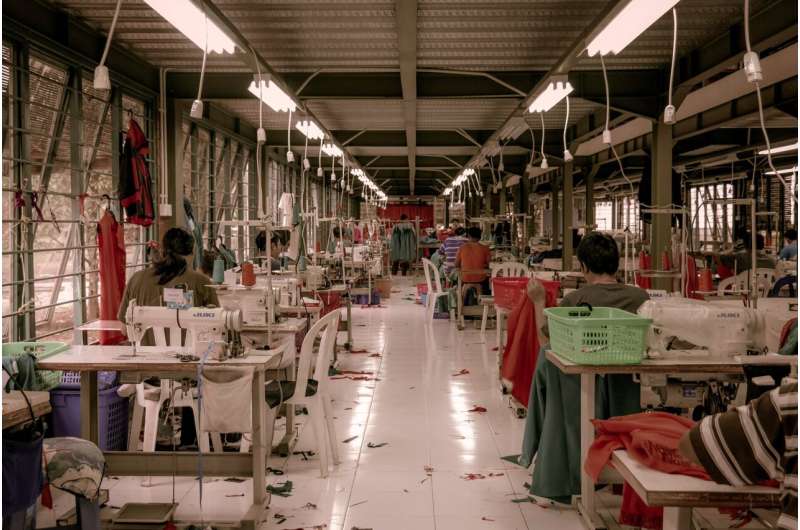This article has been reviewed according to Science X's editorial process and policies. Editors have highlighted the following attributes while ensuring the content's credibility:
fact-checked
trusted source
proofread
Climate change threatens fashion industry

Extreme heat and flooding are threatening key international apparel hubs, with four countries vital to the fashion industry facing losses of 1 million jobs and $65 billion in earnings by 2030, according to two new ILR School reports.
The "Higher Ground?" reports, which examine how workers and the industry can adapt to climate change and approve working conditions in the apparel sector, were published Sept. 13 by the Global Labor Institute at Cornell University and Schroders, an investment management firm.
Fashion, the third highest global producer of greenhouse gases, focuses its climate change efforts on mitigation goals such as increasing use of recycled fabrics and reducing water usage, according to the reports. But fashion largely ignores the effects of climate breakdown on workers, communities and industries producing the world's garments.
The first report, "Fashion's Climate Breakdown and its Effect for Workers," focuses on 32 apparel production centers vulnerable to heat and flooding due to climate change. The second report, "Climate Resilience and Fashion's Costs of Adaptation," focuses on six brands in the major apparel production countries, Bangladesh, Cambodia, Pakistan and Vietnam, where 10,000 apparel and footwear factories employ 10.6 million workers.
"Our work addresses the risks of fashion staying on the low road of mitigation. Workers' health and income would be even more highly threatened than it is now, and the industry would face long-term losses," said Jason Judd, executive director of the institute. "The 'higher ground' approach would improve worker wellness, job creation, export earnings and the viability of the industry," he said.
Findings from the reports, based on climate models projecting heat and flooding impacts, include:
- Bangladesh, Cambodia, Pakistan and Vietnam, which produce 18% of global apparel exports, could lose $65 billion—a 22% decline—in export earnings by 2030, along with nearly 1 million new jobs due to slower growth.
- By 2050, continuing current practices in the four countries leading production could result in 68.8% lower industry earnings and the loss of 8.6 million jobs, a 34.5% employment drop.
- Fashion brands and retailers that shift sourcing away from climate-vulnerable areas would struggle to build the large-scale capacity they benefit from in South and Southeast Asia.
Recommendations include:
- Establish paid leave, the right to stop work, altered work hours, adequate rest and water, and other employee protections.
- Develop climate adaptation financing that redistributes costs and risks away from apparel workers.
- Establish binding agreements and foster formal partnerships between brands, manufacturers, employers, unions and governments to address and adapt to climate breakdown.
- Exploration by brands and suppliers on investment returns from adaptation measures and support for suppliers to retrofit or relocate nearby in lower-risk locations.
- Engagement by investors with apparel companies and their stakeholders to encourage adoption of adaptation measures.
- Government integration of climate adaptation and worker rights-related factors into trade policies.
Sarosh Kuruvilla, ILR's Andrew J. Nathanson Family Professor in Industrial and Labor Relations and academic director of the Global Labor Institute, said, "By clarifying the industry's exposure to climate risks, our work with Schroders is a wake-up call for manufacturers, brands, investors and apparel-exporting country governments to treat heat and flood events as health and economic hazards that need urgent attention."
Angus Bauer, head of sustainable investment research at Schroders, said the research highlights the urgent need for action. "Investors must begin to engage with apparel companies and their stakeholders to ensure they start to measure and address the significant challenges of physical climate impacts on workers and business models," Bauer said.
Provided by Cornell University




















